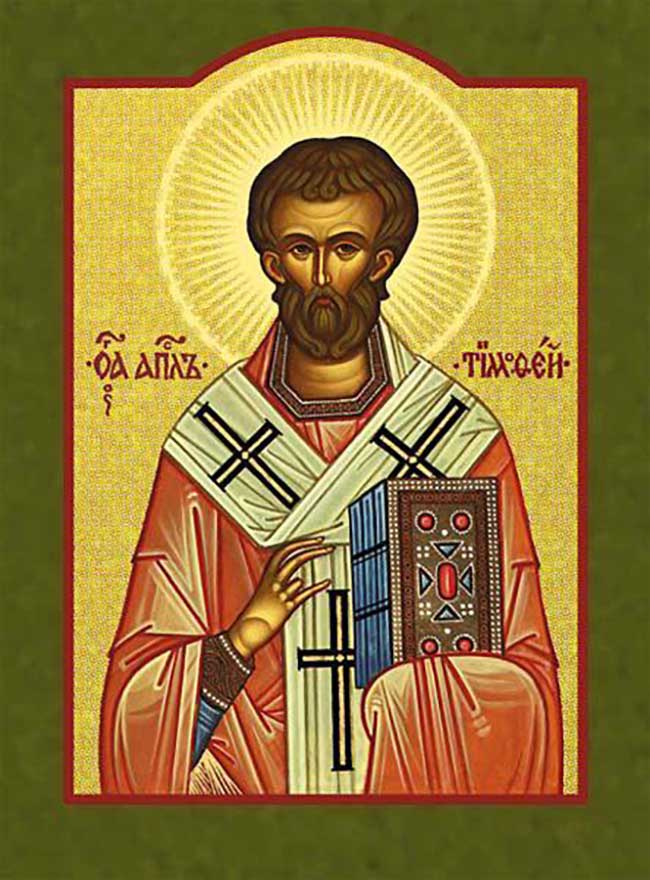House rules and cultural accommodation: the Pastoral letters
 |
| Icon of St Timothy. Via Wikimedia Commons. |
The Sunday lectionary reads selections from 1 & 2 Timothy through in sequence towards the end of Year C,1 and uses a couple of short excerpts from Titus in the selections for Christmas Day. As I noted in my introduction to Paul’s letters, these three are sufficiently like each other to be grouped together, and sufficiently different from Paul’s other letters for many people to wonder if he wrote them. Although they are usually called, collectively, the Pastoral Letters, I think they might better be thought of as “organisational letters” written for those who have some responsibility for organising the church.
Whether Paul did write them, directly, indirectly or not at all, they are in any case different in form. They are not letters to churches, but letters from a senior to a junior colleague. If Paul (as the letters say) calls Timothy and Titus his “sons” in the faith, we should remember that was not simply a relationship of affection, but one in which the father could lay claim to the obedience of the son, and direct him how to carry out his life and work. That alone would be enough to give them a very particular tone.
In the presumed relationship between Paul and these two “sons”, we also see something of the way in which the church comes to structure itself. The offices of bishop and deacon, which first appear at Philippi (Phil 1:1) now seem to be becoming more widespread as terms for leaders (1 Tim 3:1-13). The family relationships that Paul claims for himself, and Timothy and Titus as his household, also become a model for church leadership, and a means of discerning the calling to it: “if someone does not know how to manage his own household, how can he take care of God’s church?” (1 Tim 3:5).
The place of women in the church seems to be taking a further step backwards even from the situation in Colossians and Ephesians. First Timothy in particular seems to take a very big step away from Paul’s acceptance of women as colleagues. There is unfortunately insufficient context to help us understand if a very particular problem is being addressed, or if this apparent change in the status of women in the church is a good reason for doubting these letters come in any straightforward way from Paul’s pen.2
Bishops and deacons, and the letters still seem to expect women to be counted among the deacons (1 Tim 3:11), seem to exist as groups sharing leadership rather than isolated individual ministers. Elders (Tit 1:5) and bishops (Tit 1:7) seem to be interchangeable titles. The idea of a single bishop in a place doesn’t seem to really arrive until St Ignatius of Antioch at the beginning of the second century. However, Timothy and Titus do, rather like Paul, operate much more as individual leaders – much more like later monarchical bishops – even if they have collegial groups to work with. Whereas First Timothy and Titus address the role of each as church organiser, Second Timothy concentrates on Timothy’s role as a teacher, continuing Paul’s work of passing on the nascent Christian tradition (2 Tim 2:2; 2:24-25; 3:14-4:5).
If the previous section on the Thessalonian letters showed us a church carried away with enthusiasm for the end of the world, these three letters show it dug in for the long haul. They form an early version of handbooks for managing the pastoral care of the church, and legislating practically for a church that isn’t yet organised by law and custom.
Some of the trajectories which will lead to the more fully developed church of the second century are now plainly visible, and this strange mix of radicalism and conservatism will continue to interact with each other in the history of the church. There is always a tension between passing on the faith and teaching of the gospel, and seeking to adapt the life and understanding of the church appropriately to the world in which it does so.
Notes
Propers 19 – 25, 24th – 30th Sundays in Ordinary Time.
- The most problematic verses (1 Tim 2:12-15) also bristle with translation issues: does the writer forbid women to have authority over men, or forbid wives from bossing their husbands about? Does he say women’s salvation depends on having children, or that women will be kept safe through childbirth if they live appropriately obedient lives? It is these kinds of questions that help stir the pot about whether Paul could possibly have written such verses. Fortunately, these verses need not trouble readers of the Sunday lectionary, as they are (quite wisely!) not used.




Comments
Post a Comment